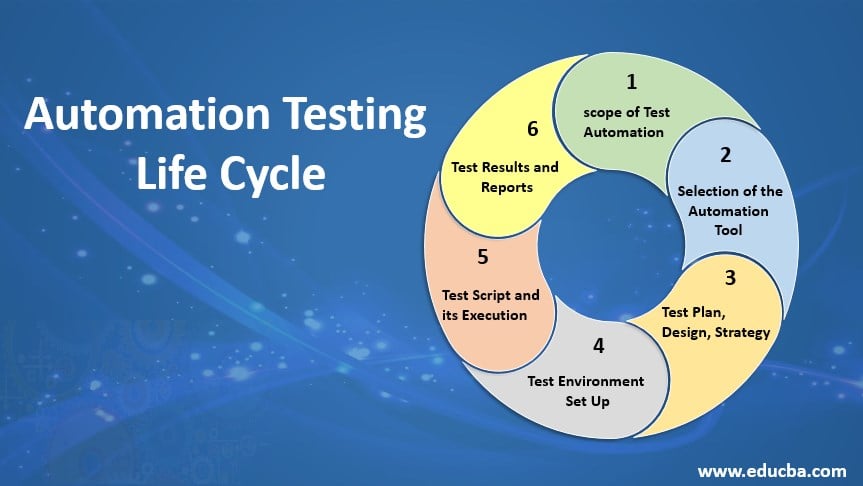Effective Automation Testing: Enhancing Software Reliability and Speed
Effective Automation Testing: Enhancing Software Reliability and Speed
Blog Article
Making Sure Success in Automation Testing: Trick Metrics, Obstacles, and Solutions Every QA Team Should Know
In the world of software application quality control, the landscape of automation testing is ever-evolving, demanding a careful approach to make certain seamless procedures. Secret metrics function as the compass directing QA teams with the substantial terrain of examination automation, clarifying development and locations for improvement. However, challenges impend big, typically casting shadows on the course to success. By understanding these obstacles and implementing effective solutions, QA teams can navigate with intricacies with finesse. The trip to grasping automation testing is paved with subtleties that need a keen eye for monitoring, analysis, and constant renovation. automation testing. As the sector drives ahead, the quest for ideal performance in automation screening remains a continuous quest, urging QA teams to furnish themselves with the understanding and approaches essential for victory.
Significance of Trick Metrics
Recognizing the significance of key metrics is necessary for assessing the efficiency and performance of automation testing procedures. Key metrics function as quantifiable measures that offer important insights right into various elements of the screening process, such as test protection, test implementation time, defect density, and examination instance effectiveness. By examining these metrics, QA teams can recognize traffic jams, ineffectiveness, and locations for renovation within their automation screening structure.
One vital element of key metrics is their capability to track progression and keep track of the overall health of the testing process (automation testing). They enable stakeholders to make educated decisions based on data-driven insights, which can lead to much more reliable screening approaches and better resource allocation. Additionally, crucial metrics can help groups set practical goals, determine the success of automation efforts, and demonstrate the ROI of automation testing initiatives

Typical Challenges Encountered
Obstacles typically experienced in automation screening processes can dramatically impact the overall efficiency and effectiveness of QA groups. Automation screening might not cover all facets of screening, such as usability and customer experience screening, which still need hand-operated intervention. Conquering these challenges needs correct preparation, strategic examination case choice, durable maintenance processes, ample sources, and a clear understanding of the limitations of automation screening.
Efficient Solutions for Obstacles
To resolve the challenges encountered in automation screening, implementing reliable remedies is essential for boosting the efficiency and efficiency of QA teams. One essential service is to buy robust training programs for QA groups to guarantee they have the needed abilities to successfully utilize automation devices. Training can link understanding gaps, improve understanding of automation structures, and boost scripting abilities, eventually leading to more efficient examination production and implementation.
An additional crucial remedy is to establish clear communication channels within the QA team and with various other stakeholders, such as programmers and task managers. Effective communication aids in lining up expectations, sharing development updates, and promptly addressing issues or barricades that may develop during the automation screening process.

Monitoring and Analysis Methods
Applying reliable monitoring and evaluation techniques is crucial for making sure the success and effectiveness of automation testing procedures. By making use of monitoring tools, QA teams can track the performance of test manuscripts, identify traffic jams, and pinpoint he said locations for renovation. Real-time monitoring enables quick discovery of concerns, allowing rapid feedback and resolution. In addition, analyzing examination results and metrics provides important insights into the high quality of the software application being tested and the performance of the testing strategy.
One secret method in monitoring and analysis is using dashboards that consolidate pertinent metrics and KPIs in an aesthetically easily accessible layout. These dashboards offer an extensive review of test execution status, examination insurance coverage, defect patterns, and other essential information. On a regular basis evaluating and examining these control panels can assist QA teams make educated decisions, focus on jobs, and maximize screening efforts.
Moreover, executing automated signals and notices based on predefined thresholds can improve proactive surveillance and prompt treatment. By establishing up notifies for efficiency deviations or examination failures, groups can resolve problems promptly and prevent them from intensifying. On the whole, surveillance and evaluation strategies play a crucial duty in making sure the efficiency and success of automation screening initiatives.
Continual Renovation Approaches
Enhancing the efficiency of automation testing procedures requires the constant improvement of approaches and methods. One key strategy to improving automation testing procedures is to perform normal evaluations and retrospectives.

Conclusion
Finally, it is essential for QA teams to comprehend the crucial metrics, difficulties, and services in automation screening to ensure success. By very carefully keeping an eye on and evaluating information, executing effective solutions to common obstacles, and continuously boosting approaches, QA groups can maximize their testing procedures and supply high-quality software items. Following these practices will ultimately cause extra reliable and effective automation screening methods.
By examining these metrics, QA groups can identify traffic jams, ineffectiveness, and locations blog for improvement within their automation screening structure.
Additionally, vital metrics can help teams set realistic goals, gauge the success of automation initiatives, and show the ROI of automation testing efforts.
Difficulties typically come across in automation screening processes can considerably impact the overall effectiveness and performance of QA teams. Automation testing might not cover all aspects of testing, such as use and individual experience screening, which still call for hands-on treatment.In final thought, it is vital check my reference for QA groups to understand the key metrics, challenges, and options in automation testing to ensure success.
Report this page